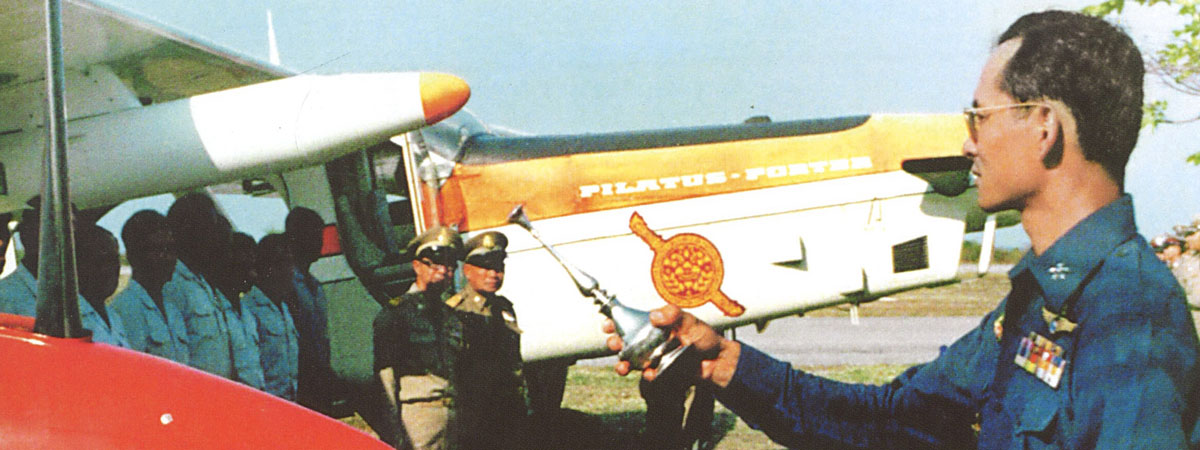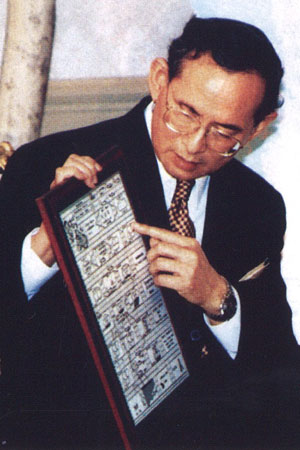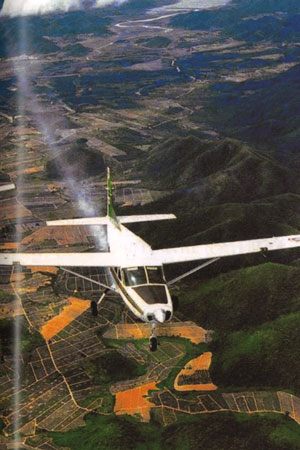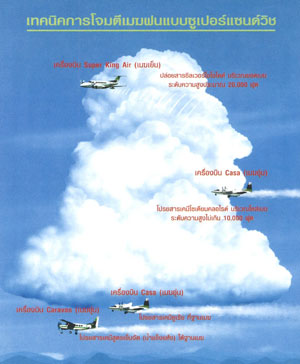

Well aware that Thai farmers often suffered from drought conditions due to insufficient rainfall during the long dry season, His Majesty King Bhumibol Adulyadej The Great decided, in 1955, to devote himself to studying and researching ways and means of creating artificial rainmaking techniques, donating a contribution from his private funds to launch the Royal Rainmaking Project.
In 1969, He was at last able to test his innovative project by seeding a suitable cloud formation with a quantity of cubic-inch size dry ice particles, or solid carbon dioxide, at a height of 10,000 feet, changing the physical format of the cloud from moisture layers to a heavy water droplet laden cloud formation, which then fell as rain.
The experiment was witnessed by observers on the ground, who recorded the rain falling from the treated cloud formation onto Khao Yai National Park. This indicated the strong possibility of being able to seed larger cloud formations and controlling rainfall in a particular area when required.


On October 19, 1972, He demonstrated a new formula for the Royal Rainmaking Project to achieve a more effective result, for the first time in the world at Kaeng Krajan Dam, Phetchaburi Province. A large assembly of people, including foreign diplomats, government representatives, and a vast gathering of Thai people was present for the demonstration, which witnessed a steady shower of artificial rain falling in the designated area.







